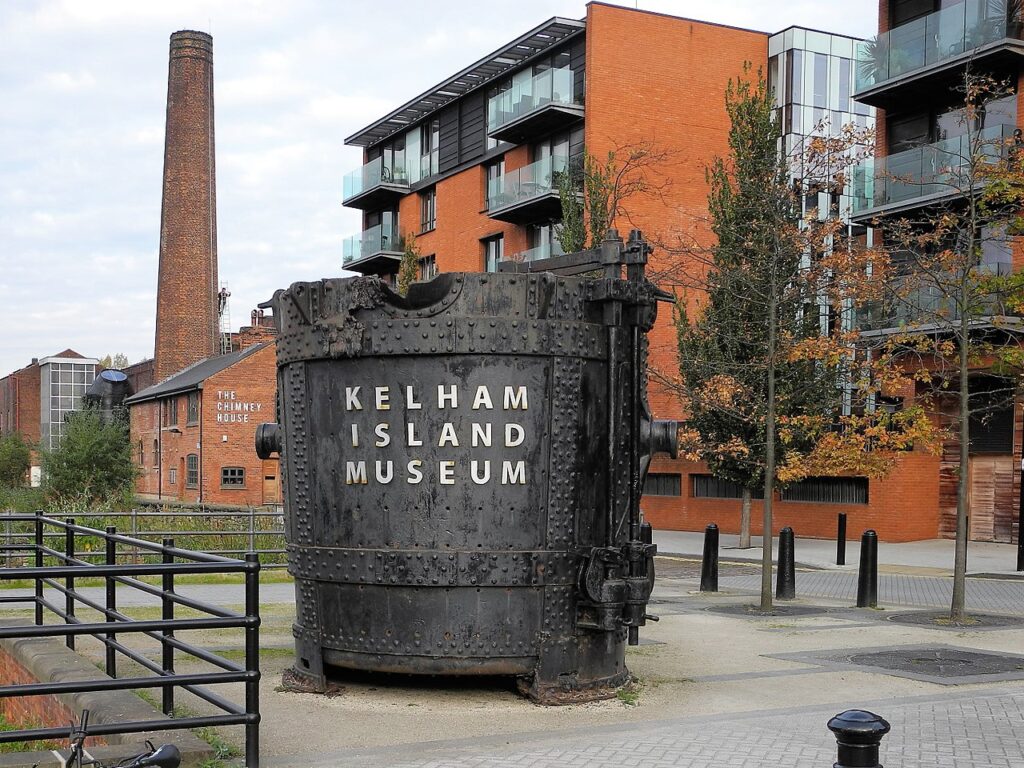The Kelham Island Museum is a commercial gallery on Alma Road, next to the River Don, in the centre of Sheffield, England. It was opened in 1982.
The island on which it lies is man-made, arising from the building and construction of a mill race, in the 12th century, which diverted water from the River Don to power a corn mill belonging to the Lord of the Manor. It is reported that the island was consequently called after the Town Armourer, Kellam Homer, who owned a grinding workshop on the neighbouring goit (mill race) in 1637.<br>
Having remained meadow land until the 1890s. The site was flooded on 11 March 1864, when the Dale Dyke Dam was damaged, causing damage to workshops on the site. Crowley’s Iron Factory was made into a power plant in 1899 to give electrical energy for the brand-new fleet of cable cars in the city. The power station ran up to the 1930s when the structure was made use of for storage and also workshops. These are the premises now inhabited by the museum, along with Russell Functions, now inhabited by Messers Wheatman as well as Smith. Russell Works currently houses the Hawley Gallery as well as the Crucible Store, both part of the museum.

The Museum
The museum seen from throughout the mill race
The museum exhibits on science and Sheffield market, including instances of rebuilt little mesters’ workshops as well as England’s biggest enduring Bessemer converter. This received an Engineering Heritage Honour in 2004 from the Organization of Mechanical Designers. (Henry Bessemer’s pilot converter is on display at the Science Gallery (London)). The gallery offers trips to local schools and also has normal demos of the 1905 River Don Engine, a 12,000 horse power (9 MW) steam engine, which initially powered a nearby armour plate rolling mill. The engine is remarkable for its capability to carry out tasks extremely swiftly, a function that was required for the effective rolling of heavy steel. The engine rolled steel for atomic power plants in the towards the end of its life (it was last made use of in production in 1978 at the River Don Works). The museum is run by the Sheffield Industrial Museums Trust. It is a member of ERIH, The European Route of Industrial Heritage.
The Museum houses the model Sheffield-Simplex cars and motorcycles, one of just 3 in existence. The cars and motorcycle was described as, “one of the very best yet achieved”, by The Times in 1913. The Benjamin Huntsman Clock, the very first made object to include Crucible Cast Steel, can be seen in the Enid Hattersley Gallery. The Gallery likewise has a vast photo archive which is made use of by writers researching regional history.
The Gallery suffered greatly in the Sheffield flood of July 2007 with water over a metre deep flooding the site, creating ₤ 1.5 million of damage. Paints by William Cowen and also Henry Perlee Parker, a drawing master at Sheffield’s Wesleyan College, were some of the things damaged by the floodwater. The Museum was closed for 18 months for refurbishment, opening again in September 2008. The Gallery got a national commendation from the Museums, Libraries and Archives Council (MLA) for its recovery from the 2007 floods. The site is now safeguarded by brand-new flood defences which were completed in December 2011.
